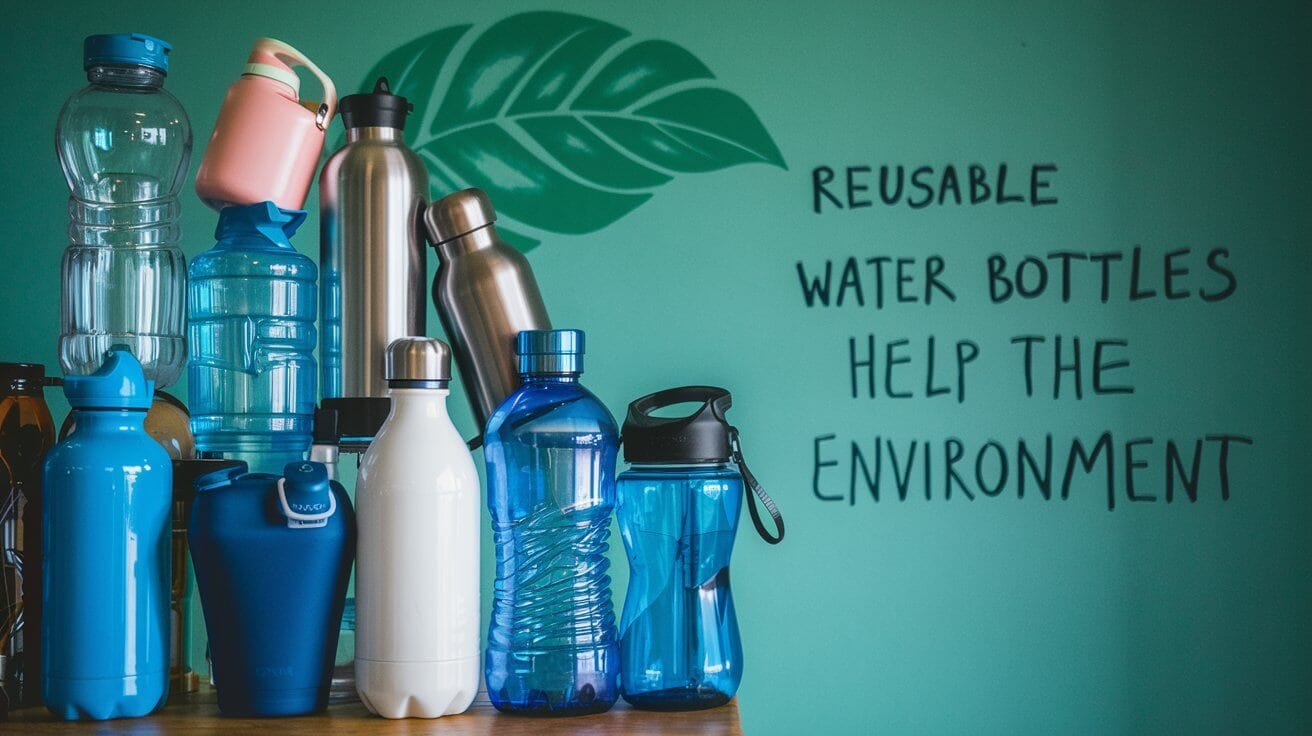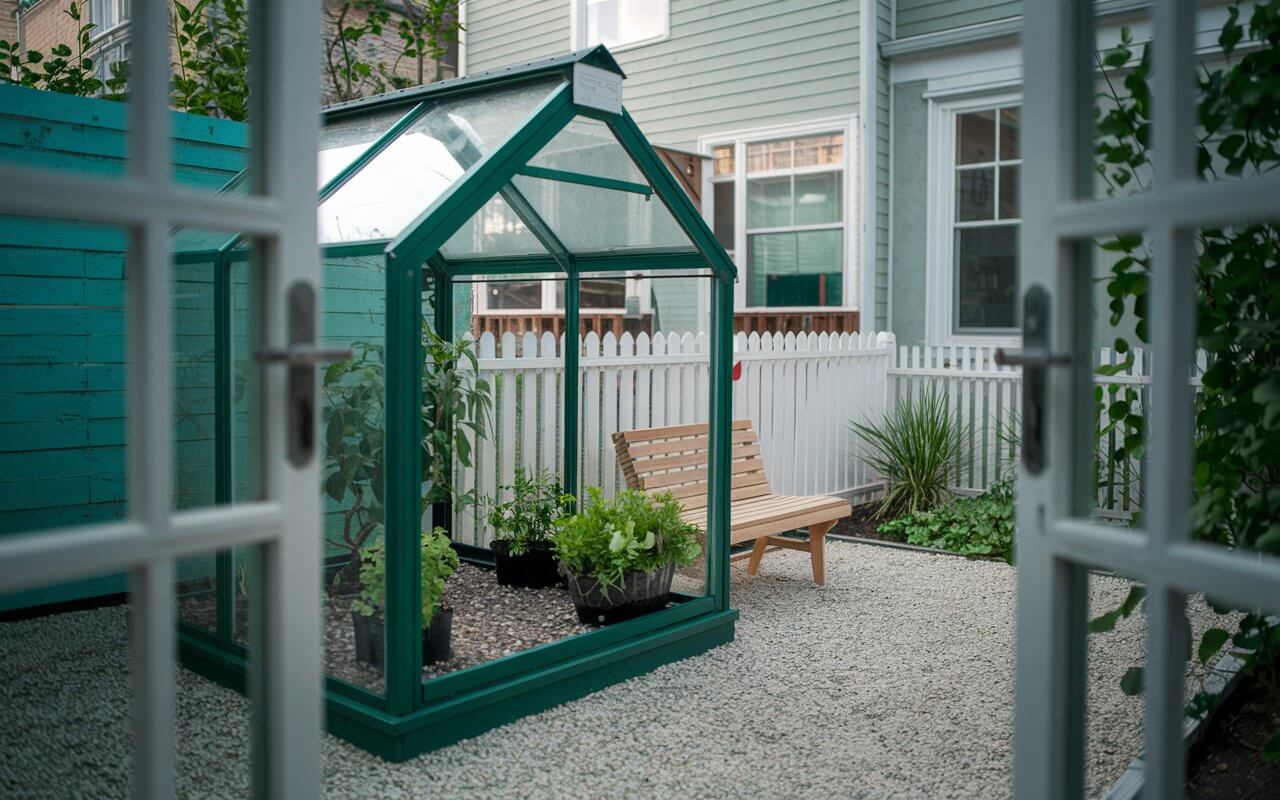Are you ready to transform your mornings into a powerhouse of productivity and sustainability?
A sustainable morning routine is not just a trend, it’s a lifestyle choice that can significantly enhance your well-being and reduce your environmental impact.
A sustainable morning routine combines practices that promote personal well-being with environmentally conscious choices.
Key benefits of a sustainable morning routine include:
- Increased productivity and focus.
- Enhanced physical and mental well-being.
- Reduced environmental impact.
- Alignment of daily actions with eco-friendly values.
- Improved energy levels and stress management.
By adopting eco-friendly habits, you can start each day with intention and purpose because every small change contributes to a healthier planet.
Dive into this guide to discover practical steps that will energize your mornings and align your daily actions with your eco-conscious values.
Key Takeaways
- Wake Up Early: Start your day with extra time for sustainable practices and mental clarity.
- Hydrate: Drink water first thing to boost metabolism and flush out toxins.
- Exercise: Incorporate morning workouts to enhance energy and mood while reducing environmental impact.
- Eat Sustainably: Choose nutritious, plant-based breakfasts to fuel your body and support local agriculture.
- Practice Mindfulness: Engage in meditation or mindfulness exercises to improve mental health and focus.

Page Contents
ToggleStep 1: Wake Up Early and Consistently
Why Waking Up Early Matters
Rising with the sun isn’t just a habit of successful people, it’s also a sustainable practice that can significantly improve your life quality and reduce your environmental impact.
Here’s why:
- Extra Time for Sustainable Practices: Waking up earlier gives you the time to engage in eco-friendly activities with your family and friends like preparing a homemade breakfast or planning your day to minimize unnecessary travel.
- Natural Light Exposure: Early mornings provide exposure to natural light, which helps regulate your circadian rhythm. This can lead to better sleep quality and reduced reliance on artificial lighting, saving energy.
- Reduced Rush Hour Traffic: By starting your day earlier, you can avoid peak traffic times, potentially reducing your carbon emissions if you need to commute.
- Mental Clarity: The quiet early hours provide an ideal environment for meditation, planning, and setting intentions for a more mindful and sustainable day.
How to Start Waking Up Earlier
Transitioning to an earlier wake-up time doesn’t have to be painful. Here are some eco-friendly tips to help you adjust:
- Gradual Adjustment: Shift your wake-up time by 10-15 minutes earlier each week. This gentle approach is more sustainable and less likely to result in burnout.
- Create a Relaxing Bedtime Routine:
- Use natural essential oils like lavender for relaxation instead of synthetic air fresheners.
- Read a book on sustainability or personal growth instead of scrolling on your phone.
- Practice gentle yoga or stretching to wind down.
- Optimize Your Sleep Environment:
- Use blackout curtains made from sustainable materials to block out light pollution.
- Invest in an eco-friendly mattress and bedding for better sleep quality.
- Keep your bedroom cool (around 65°F or 18°C) to promote better sleep and save on heating/cooling costs.
- Avoid the Snooze Button: Place your alarm clock or phone across the room, forcing you to get out of bed to turn it off. Better yet, use a sunrise alarm clock that mimics natural light to wake you gently.
Remember, consistency is key.
Stick to your new wake-up time even on weekends to maintain your body’s natural rhythm.
With time and practice, you’ll find that waking up early becomes a natural and enjoyable part of your sustainable lifestyle.
Step 2: Hydrate as Soon as You Wake Up
Importance of Morning Hydration
Starting your day with a glass of water is like giving your body a gentle wake-up call.
After hours of sleep, your body needs rehydration to kickstart its functions.
Here’s why morning hydration is crucial:
- Metabolic Boost: Drinking water in the morning can increase your metabolic rate by up to 30%, helping you burn more calories throughout the day.
- Toxin Flush: Water helps flush out toxins that have accumulated in your body overnight, supporting your kidneys and liver in their detoxification processes.
- Improved Cognitive Function: Even mild dehydration can affect your mood, energy levels, and cognitive performance. Morning hydration sets you up for a more productive day.
- Better Digestion: A glass of water in the morning helps stimulate your digestive system, potentially aiding in better nutrient absorption from your breakfast.
Eco-Friendly Hydration Tips
While hydrating is important, it’s equally crucial to do so in an environmentally conscious way.
Here are some sustainable hydration practices:
- Use a Reusable Water Bottle: Invest in a high-quality, eco-friendly water bottle made from materials like stainless steel or glass. This reduces plastic waste and keeps your water cool.
- Filter Tap Water: Instead of buying bottled water, use a water filter to purify your tap water. This reduces plastic waste and is more cost-effective in the long run.
- Add Natural Flavors: Enhance the taste of your water with these eco-friendly options:
- Slice of lemon or lime (organic if possible).
- Cucumber slices.
- Fresh mint leaves.
- A splash of 100% fruit juice.
- Temperature Matters: Drink room temperature or slightly warm water. Cold water requires more energy from your body to process, and heating water uses unnecessary energy.
- Track Your Intake: Use a marked water bottle or a hydration tracking app to ensure you’re getting enough water throughout the day. This mindful approach can help you avoid overusing water.
Hydration Schedule
To make morning hydration a habit, try this simple schedule:
| Time | Action |
|---|---|
| Immediately upon waking | Drink 1 glass of room-temperature water |
| 30 minutes before breakfast | Drink 1 glass of water with a squeeze of lemon |
| With breakfast | Herbal tea or water infused with fruits/herbs |
Remember, the goal is to make hydration a sustainable habit.
Start with what feels comfortable and gradually increase your water intake.
Your body and the planet will thank you for this simple yet impactful morning ritual.
Step 3: Engage in Morning Exercise
Benefits of Morning Physical Activity
Incorporating exercise into your morning routine not only boosts your physical health but also contributes to a more sustainable lifestyle.
Here’s why morning workouts are beneficial:
- Energy Boost: Morning exercise increases your energy levels for the day ahead. A study published in the British Journal of Sports Medicine found that morning physical activity was associated with better cognitive performance throughout the day.
- Mood Enhancement: Exercise releases endorphins, the body’s natural mood elevators. Starting your day with a workout can lead to improved mental health and reduced stress levels.
- Metabolism Boost: Morning workouts can increase your metabolic rate, helping you burn more calories throughout the day.
- Better Sleep: Regular morning exercise can improve your sleep quality, according to research published in the journal Sleep Medicine.
- Environmental Impact: By exercising in the morning, you’re more likely to use natural light and cooler temperatures, reducing the need for artificial lighting and air conditioning.
Sustainable Exercise Options
When choosing your morning exercise routine, consider these eco-friendly options:
- Outdoor Activities:
- Morning walk or jog in your neighborhood or local park.
- Cycling (use a bike-sharing program if available in your area).
- Outdoor yoga or tai chi in a green space.
- Home Workouts:
- Bodyweight exercises (push-ups, squats, lunges).
- Yoga or pilates using a sustainable yoga mat.
- High-Intensity Interval Training (HIIT) routines.
- Sustainable Equipment:
- Use resistance bands instead of heavy weights.
- Opt for secondhand or eco-friendly exercise equipment.
- Choose workout clothes made from sustainable materials.
Sample Sustainable Morning Workout Routine
Here’s a 15-minute routine that requires no equipment and can be done anywhere:
- Warm-up (2 minutes): Light jogging in place, arm circles.
- Bodyweight squats (1 minute).
- Push-ups or modified push-ups (1 minute).
- Lunges (alternating legs, 1 minute).
- Plank hold (30 seconds).
- Mountain climbers (1 minute).
- Burpees (1 minute).
- Jump squats (1 minute).
- Bicycle crunches (1 minute).
- Cool-down stretches (5 minutes).
Tips for Maintaining a Sustainable Exercise Routine
- Start Small: Begin with just 5-10 minutes of exercise and gradually increase the duration.
- Stay Hydrated: Use your reusable water bottle to stay hydrated during and after your workout.
- Use Natural Light: Exercise outdoors or near a window to reduce reliance on artificial lighting.
- Choose Multi-Use Spaces: If possible, exercise in areas of your home that serve multiple purposes to avoid the need for a dedicated workout room.
- Track Progress Digitally: Use a fitness app to track your workouts instead of paper logs.
Remember, the most sustainable exercise routine is one that you can maintain consistently.
Find activities you enjoy and make them a regular part of your morning routine for long-term success and well-being.
Step 4: Prepare a Healthy and Sustainable Breakfast
Why Breakfast is Essential
Starting your day with a nutritious breakfast is crucial for maintaining energy levels and focus throughout the morning.
Research from the International Journal of Environmental Research and Public Health shows that regular breakfast consumption is associated with better cognitive performance and mood.
- Fuels your body and mind for the day ahead.
- Helps maintain stable blood sugar levels.
- Improves concentration and memory.
Eco-Friendly Breakfast Ideas
Choosing sustainable breakfast options not only benefits your health but also reduces your environmental impact.
Here are some ideas to make your morning meal more eco-friendly:
- Choose plant-based, locally-sourced ingredients:
- Opt for seasonal fruits and vegetables from local farmers’ markets.
- Try plant-based milk alternatives like oat or almond milk.
- Prepare meals like:
- Overnight oats with chia seeds and fresh berries.
- Green smoothies with spinach, banana, and plant-based protein.
- Whole-grain toast with avocado and sprouts.
- Minimize food waste
- Plan portions carefully to avoid over-preparing.
- Use leftovers creatively (e.g., add leftover vegetables to omelets).
- Compost fruit and vegetable scraps.
Sustainable Breakfast Recipe: Overnight Oats
| Ingredients | Instructions |
|---|---|
| 1/2 cup rolled oats | 1. Mix oats, plant-based milk, and chia seeds in a jar |
| 3/4 cup plant-based milk | 2. Add sweetener of choice (optional) |
| 1 tbsp chia seeds | 3. Stir well and refrigerate overnight |
| Fresh fruits for topping | 4. In the morning, add fresh fruits and enjoy! |
This simple recipe reduces energy consumption by eliminating the need for cooking in the morning.
Step 5: Practice Mindfulness or Meditation
Mental Health Benefits of Mindfulness
Incorporating mindfulness or meditation into your morning routine can significantly impact your mental well-being and set a positive tone for the day.
Studies have shown that regular mindfulness practice can lead to numerous health benefits:
- Reduces stress and anxiety.
- Improves focus and concentration.
- Enhances emotional regulation.
- Boosts overall well-being and life satisfaction.
According to a meta-analysis published in the Journal of Psychosomatic Research, mindfulness-based stress reduction programs have shown moderate effectiveness in reducing stress, depression, anxiety, and distress.
How to Incorporate Mindfulness into Your Routine
- Start with 5-10 minutes of meditation or deep breathing exercises
- Gradually increase the duration as you become more comfortable.
- Consistency is key, and aim for daily practice.
- Use guided meditation apps if you’re a beginner
- Popular options include Headspace, Calm, and Insight Timer.
- Many apps offer free trials or basic features at no cost.
- Consider journaling or setting intentions for the day
- Write down three things you’re grateful for each morning.
- Set positive intentions or affirmations for the day ahead.
Simple Mindfulness Exercise: The 5-4-3-2-1 Technique
This quick grounding exercise can help you start your day mindfully:
- Identify 5 things you can see.
- Acknowledge 4 things you can touch.
- Notice 3 things you can hear.
- Recognize 2 things you can smell.
- Be aware of 1 thing you can taste.
This technique helps bring your attention to the present moment and can be particularly useful if you’re feeling stressed or overwhelmed.
Sustainable Mindfulness Practices
Mindfulness not only benefits your mental health but can also contribute to a more sustainable lifestyle:
- Practice outdoor meditation to connect with nature.
- Use eco-friendly meditation cushions made from sustainable materials.
- Choose digital meditation resources over printed materials to reduce paper waste.
By incorporating mindfulness into your sustainable morning routine, you’re nurturing both your mental health and the environment.
Remember, the goal is to create a practice that works for you and fits seamlessly into your daily life.
Step 6: Plan Your Day with Intent
Importance of Planning
Taking time each morning to plan your day can significantly improve your productivity and reduce stress. Intentional planning helps you:
- Prioritize tasks effectively.
- Manage time more efficiently.
- Reduce decision fatigue throughout the day.
- Increase overall productivity and goal achievement.
A study published in the Journal of Educational Psychology found that planning interventions have a medium-sized effect on goal attainment.
Sustainable Planning Tips
- Use digital tools or eco-friendly planners:
- Opt for apps like Todoist, Trello, or Google Calendar.
- If you prefer paper, choose planners made from recycled materials or tree-free paper.
- Break down large tasks into manageable steps:
- Use the SMART goal framework: Specific, Measurable, Achievable, Relevant, Time-bound.
- Estimate time for each task to avoid overcommitting.
- Include time for breaks and self-care:
- Schedule short breaks between tasks to maintain focus and energy.
- Allocate time for sustainable practices like refilling your reusable water bottle.
The Eisenhower Matrix: A Tool for Prioritization
Use this matrix to categorize your tasks:
| Urgent | Not Urgent |
|---|---|
| Important: Do First | Important: Schedule |
| Not Important: Delegate | Not Important: Eliminate |
This method helps you focus on what truly matters and reduces time spent on less important tasks.
Remember, the key to effective planning is finding a system that works for you and sticking to it consistently.
By planning your day with intent, you’re not only optimizing your productivity but also making space for sustainable choices throughout your day.
Step 7: Opt for Eco-Friendly Personal Care
Why Sustainable Personal Care is Important
Choosing eco-friendly personal care products is a crucial step in reducing your environmental footprint.
The personal care industry significantly contributes to plastic pollution and chemical waste. By making sustainable choices, you can:
- Reduce plastic waste from packaging.
- Minimize harmful chemicals entering water systems.
- Support ethical and sustainable brands.
- Promote biodiversity and reduce deforestation.
According to a report by the Ellen MacArthur Foundation, the personal care industry produces 120 billion units of packaging annually, most of which are not recyclable.
How to Switch to Sustainable Products
- Use natural and eco-friendly alternatives:
- Natural deodorants in recyclable packaging.
- Bamboo toothbrushes (biodegradable handle).
- Eco-friendly skincare products with natural ingredients.
- Choose products with minimal packaging or refillable options:
- Bar soaps instead of liquid soaps in plastic bottles.
- Shampoo and conditioner bars.
- Refillable containers for lotions and creams.
- Support brands that prioritize sustainability and cruelty-free practices:
- Look for certifications like Leaping Bunny, PETA-certified vegan, or EcoCert.
- Research brands’ sustainability commitments and practices.
DIY Eco-Friendly Toothpaste Recipe
| Ingredients | Instructions |
|---|---|
| 2 tbsp coconut oil | 1. Mix all ingredients in a small jar |
| 1 tbsp baking soda | 2. Add essential oil for flavor (optional) |
| 10 drops peppermint essential oil | 3. Use a small amount on your bamboo toothbrush |
This homemade toothpaste eliminates the need for plastic tubes and reduces your exposure to potentially harmful chemicals.
Tips for a Sustainable Personal Care Routine
- Conserve water:
- Turn off the tap while brushing your teeth or lathering in the shower.
- Install a low-flow showerhead to reduce water usage.
- Use reusable and washable items:
- Cotton rounds for makeup removal.
- Microfiber cloths for facial cleansing.
- Properly dispose of or recycle empty containers:
- Check local recycling guidelines for personal care packaging.
- Look for take-back programs offered by eco-friendly brands.
- Simplify your routine:
- Use multi-purpose products to reduce overall consumption.
- Focus on quality over quantity in your skincare and makeup choices.
By incorporating these sustainable personal care practices into your morning routine, you’re not only taking care of yourself but also contributing to a healthier planet.
Step 8: Limit Screen Time in the Morning
Impact of Morning Screen Time on Your Routine
Excessive screen time, especially first thing in the morning, can have several negative effects on your day:
- Increases stress and anxiety levels.
- Reduces productivity and focus.
- Negatively affects mental health and well-being.
- Disrupts natural sleep-wake cycles.
A study published in the journal Computers in Human Behavior found that smartphone usage immediately after waking was associated with poorer sleep quality and increased fatigue during the day.
How to Reduce Screen Time
- Delay checking your phone or computer until after breakfast:
- Keep devices out of the bedroom or use “Do Not Disturb” mode overnight.
- Consider using a traditional alarm clock instead of your phone.
- Replace screen time with alternative activities:
- Reading a physical book or e-reader (with a blue light filter).
- Journaling or writing morning pages.
- Taking a morning walk or doing light exercise.
- Set specific times for checking emails and social media later in the day:
- Use app blockers or time management apps to limit access to certain apps.
- Create a schedule for checking messages and stick to it.
Digital Detox Challenge
Try this 7-day challenge to reduce morning screen time:
| Day | Challenge |
|---|---|
| 1-2 | No screens for the first 30 minutes after waking |
| 3-4 | Extend to 1 hour of no screen time |
| 5-6 | No screens until after breakfast |
| 7 | No screens for the first 2 hours of your day |
Sustainable Alternatives to Morning Screen Time
- Practice eco-friendly hobbies:
- Indoor gardening or tending to houseplants.
- Crafting with recycled materials.
- Learning about local environmental issues.
- Engage in mindful activities:
- Meditation or yoga practice.
- Breathing exercises or stretching.
- Preparing a mindful, sustainable breakfast.
- Connect with nature:
- Spend time outdoors, even if just for a few minutes.
- Observe local wildlife or tend to a small garden.
- Practice forest bathing if you have access to green spaces.
Benefits of Reducing Morning Screen Time
- Improved mental clarity and focus.
- Reduced anxiety and stress levels.
- Better sleep quality and circadian rhythm regulation.
- Increased productivity throughout the day.
- More time for sustainable and mindful practices.
By limiting your morning screen time, you’re not only improving your mental well-being but also creating space for more sustainable practices in your daily routine.
Step 9: Adapt Your Routine to Seasonal Changes
Why Adaptability is Key
Adapting your sustainable morning routine to seasonal changes is crucial for maintaining consistency and effectiveness throughout the year.
Different seasons bring unique challenges and opportunities, affecting everything from your sleep patterns to your energy levels and dietary needs.
- Circadian rhythm adjustments: As daylight hours change, your body’s internal clock may need recalibration. A study published in the Journal of Circadian Rhythms found that seasonal changes in light exposure significantly impact sleep-wake cycles.
- Energy conservation: Adapting your routine can help you conserve energy, both personal and environmental. For instance, adjusting your wake-up time with the seasons can reduce reliance on artificial lighting.
- Seasonal wellness: Each season brings different health considerations. A Harvard Health Publishing article emphasizes the importance of adapting health routines to seasonal immune system needs.
How to Adjust Your Routine
- Modify exercise routines according to weather:
- Summer: Opt for early morning outdoor activities to beat the heat.
- Winter: Consider indoor exercises or later morning outdoor activities when temperatures are milder.
- Spring/Fall: Take advantage of moderate temperatures for longer outdoor sessions.
- Adjust your wake-up time according to daylight hours:
- Use a sunrise alarm clock in darker months to simulate natural light.
- Gradually shift your wake-up time earlier in spring and summer to align with earlier sunrises.
- Tailor your diet to seasonal produce and temperature needs:
- Summer: Focus on hydrating foods and lighter meals.Winter: Incorporate warming foods and hearty, nutrient-dense breakfasts. Always prioritize locally sourced, seasonal produce to reduce your carbon footprint.
- Adjust your mindfulness practice:
- Summer: Practice outdoor meditation to connect with nature.
- Winter: Focus on indoor gratitude journaling or light therapy meditation.
- Revise your wardrobe sustainably:
- Invest in versatile, high-quality pieces that work across seasons.
- Consider a capsule wardrobe to minimize consumption and maximize use.
Remember, the key to a successful sustainable morning routine is flexibility.
By adapting to seasonal changes, you’ll maintain the benefits of your routine while staying in tune with the natural world around you.
Common Mistakes to Avoid When Creating a Morning Routine
Creating a sustainable morning routine is a journey of self-discovery and gradual improvement.
However, there are some common pitfalls that many people encounter. Being aware of these can help you build a more effective and sustainable routine.
Mistake 1: Setting Unrealistic Expectations
- Trying to change too much at once: Overhauling your entire morning routine overnight is often unsustainable. According to a study in the European Journal of Social Psychology, it takes an average of 66 days for a new habit to become automatic.
- Overloading your morning with too many tasks: Cramming too many activities into your morning can lead to stress and burnout.
Solution: Start small and gradually add new elements to your routine. Focus on one or two changes at a time and allow them to become habits before introducing more.
Mistake 2: Ignoring Your Body’s Natural Rhythm
- Not considering your own sleep patterns and energy levels: Forcing yourself to adopt a routine that doesn’t align with your natural circadian rhythm can be counterproductive.
- Forcing an early wake-up time without adequate sleep: Consistently shorting yourself on sleep can lead to health issues and decreased productivity.
Solution: Pay attention to your body’s natural patterns. If you’re naturally a night owl, consider a later start time that still allows for a complete morning routine.
Mistake 3: Lack of Flexibility
- Not adapting the routine to your needs or circumstances: Life changes and your routine should be able to adapt accordingly.
- Being too rigid, leads to burnout or frustration: Sticking to a strict routine without any room for deviation can lead to stress when unexpected events occur.
Solution: Build some flexibility into your routine. Have a “bare minimum” version for busy days and a more comprehensive version for when you have more time.
Mistake 4: Overlooking the Importance of Consistency
- Inconsistently following your routine: Sporadic adherence can prevent you from reaping the full benefits of a morning routine.
- Skipping key steps on busy days: Neglecting important elements like hydration or mindfulness can impact your overall well-being.
Solution: Strive for consistency, but don’t beat yourself up over occasional lapses. Aim for progress, not perfection.
Mistake 5: Not Prioritizing Self-Care
- Focusing solely on productivity: A routine that’s all work and no play is likely to be unsustainable in the long run.
- Forgetting to include relaxing or enjoyable activities: Your morning routine should set a positive tone for the day, and not feel like a chore.
Solution: Include activities that you genuinely enjoy and that contribute to your mental well-being.
This could be reading a few pages of a book, listening to your favorite podcast, or simply enjoying a cup of tea in peace.
Remember, the goal of a sustainable morning routine is to enhance your overall well-being and set a positive tone for the day.
People Also Asked
1. How do morning routines impact mental health?
A consistent morning routine can significantly boost mental health:
- Reduces stress: A structured start minimizes decision fatigue, lowering overall stress levels.
- Improves mood: Activities like exercise and meditation release endorphins, enhancing your mood.
- Increases productivity: Accomplishing tasks early creates a sense of achievement, boosting self-esteem.
- Enhances focus: Mindfulness practices in the morning improve concentration throughout the day.
- Promotes work-life balance: A well-planned morning allows time for self-care, crucial for mental well-being.
2. How can I wake up earlier and feel more energized?
Waking up earlier can be challenging, but these tips can help:
- Gradually adjust your sleep schedule: Shift your bedtime and wake-up time by 15 minutes every few days.
- Create a relaxing bedtime routine: Avoid screens an hour before bed and engage in calming activities.
- Optimize your sleep environment: Keep your bedroom cool, dark, and quiet.
- Use light to your advantage: Expose yourself to natural light soon after waking to regulate your circadian rhythm.
- Stay hydrated: Drink a glass of water as soon as you wake up to boost alertness.
A study in the Sleep Health Journal found that consistent sleep-wake times are associated with better sleep quality and daytime function.
3. What are the best morning exercises for energy?
Energizing morning exercises don’t need to be intense.
Here are some effective options:
- Yoga: Combines stretching and breathing for a full-body wake-up. Try sun salutations.
- Brisk walking: A 10-15 minute walk outdoors can boost energy and mood.
- Bodyweight exercises: Squats, push-ups, and lunges require no equipment and increase blood flow.
- High-Intensity Interval Training (HIIT): Short bursts of intense activity followed by rest periods.
- Stretching: Simple stretches can improve flexibility and reduce muscle tension.
4. What is the role of nutrition in a morning routine?
Nutrition plays a crucial role in kickstarting your day:
- Fuels your body: A balanced breakfast provides energy for the day ahead.
- Boosts cognitive function: Proper nutrition enhances focus and mental clarity.
- Stabilizes blood sugar: Eating in the morning helps maintain steady energy levels.
- Supports metabolism: A nutritious breakfast can jumpstart your metabolism.
For a sustainable and healthy breakfast, consider:
- Whole grains for sustained energy.
- Fruits and vegetables for vitamins and fiber.
- Plant-based proteins for satiety.
5. How to maintain a morning routine on a busy schedule?
Keeping a consistent morning routine with a packed schedule can be challenging, but it’s not impossible:
- Prepare the night before: Lay out clothes, pack your bag, and plan your breakfast to save time.
- Prioritize key activities: Identify the most important elements of your routine and focus on those.
- Wake up slightly earlier: Even 15 minutes can make a difference.
- Combine activities: For example, listen to a podcast while getting ready or doing light exercises.
- Use weekends wisely: Use less busy days to prepare for the week ahead.
Remember, it’s okay to have a shorter routine on busy days. Consistency, not perfection, is the goal.










